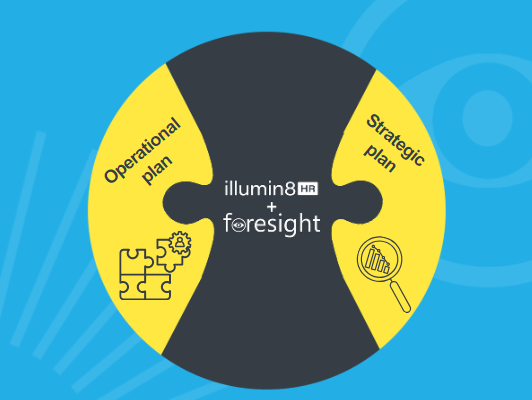In 1997, researchers Neil Howe and William Strauss published their book The Fourth Turning, which predicted America (and the West) would enter a generation-long era of fundamental civic and economic transformation starting around 2010, and that the 2020’s would be a decade of crisis and climax.
This wasn’t the ramblings of a couple of cooky conspiracy theorists. Neil and William had, 6 years earlier, coined the term ‘Millennial Generation’ in 1991, and wrote the pioneering book on this generation, Millennials Rising.
You’ll be familiar with the millennial generation – they’re your 26 – 41-year-old son, daughter, sibling, niece, nephew still living with their parents.
(If you’re 26 – 41 years old and living with parents – then you’re the millennial. And yes, Neil and William also predicted that you would be living with mum too.)
The book was so influential that Vice President Al Gore called it “the most stimulating book on American history that I have ever read” and sent a copy to every member of Congress.
Then 2008 happened, then Brexit happened, then Covid happened… and here we are. Turns out Neil and William’s early predictions may have begun to come true, (so far at least).
But what does this mean for your workforce?
Workforce Planning has never been easy. From leadership development to upskilling to forecasting, – trying to get it right and have the right skills in the right place at the right time has always been difficult, regardless of the industry. But in recent years companies have tended to dip into deep pockets to spend their way out of resourcing challenges.
How the 6 B’s became 5
The 6 B’s of talent management is a framework that helps organisations plan through their talent needs for the future. It helps you critically think through what you need to do to ensure you have the right capabilities to deliver on your organisation’s strategy.
- Buy: Acquiring the necessary external talent
- Build: Developing internal talent (usually a longer-term plan)
- Borrow: Contracting, outsourcing, or bringing in other units
- Bind: Retaining key employees and capabilities
- Boost: Accelerating planned promotions
- Bounce: Removing employees and using performance management or redundancy.
The 6 B’s has long been the resourcing function’s special utility belt used for fighting high staff turnover rates, low productivity, or rising salary costs. Whilst it has always been at every CEO, HR Director or Talent Acquisition teams’ disposal to use all of ‘The 6 B’s’, the most popular has always been the first: Buy.
Trouble finding enough skilled labour? Buy more in from mainland Europe.
Need to keep wage increase demands down? Outsource your manufacturing to the Shenzhen province in China.
Worried about low productivity? Set up your call centre operation in the Philippines and hire twice as many staff for the same amount.
Need more back-end developers to update and innovate your software product? Go back to your investors, raise another multi-million-dollar funding round and pay them whatever they ask to keep your competitive advantage.
Build, Borrow, Bind, Boost and Bounce have always been poor cousins to simply flexing those financial muscles, going to where the talent is and paying the market rate.
That is until now.
Neil and William’s annoying little Fourth Turning has put the kibosh on all of that. The upheaval in the markets, rampant inflation, wars, new border controls and general disruption all means that the big guns have been put away – for now.
The ‘War for Talent’ has become the ‘Cold War for Talent’ where Strategic Workforce Planning has grown in importance as businesses have to make smarter decisions in order to get the right skills in the right place at the right time. This is the new workforce challenge.
But Strategic Workforce Planning is still in its Infancy.
Most organisations do some form of workforce planning. 64% of all organisations in fact. But most of it is either narrow or short-term according to Gartner research.
Of those that do some form of workforce planning, 62% is considered operational, looking at 0-1 year ahead.
32% carry out talent forecasting: This is the short to medium term prediction of specific talent needs and forecast of headcount for the coming fiscal period.
30% create a talent plan: This is a forecast that goes beyond predicted annual budgeted headcount and is an attempt to forecast talent needs by the business. This often includes a succession plan or internal development plan.
25% adopt a more tactical approach and develop a workforce plan: This is looking out at least 2 years ahead and is a long-term forecast that projects the predictable workforce needs of the enterprise and often comprises factors such as attrition, historical turnover and known retirement vacancies in order to predict and/or roll up longer term talent plans.
Only 14% are conducting a strategic workforce plan: This is a long-term blueprint typically 2-3 or more years in focus to ensure workforce optimisation and seeks to adopt a holistic strategy encompassing recruiting, developing, managing, retaining and deploying talent to maximise the effectiveness of both the current and future workforce in light of strategic business priorities.
Why should I adopt a strategic workforce planning approach?
A continuously changing and evolving market environment means it is becoming more difficult for businesses to maintain competitive advantage, maintain margins and keep down costs.
Your skilled labour is such a key component in this equation that simply having a reactive approach is likely to inevitably cede any advantages your business does have to your competitors who adopt a longer term more strategic approach to getting and keeping the talent that will drive their business forward i.e. the talent that you would like to have.
How can data help?

A people analytics platform that links across your core HR, recruitment and payroll data will give you an accurate picture of future trends in your people costs and help to inform decisions on where to recruit, up-skill and promote. Easily identifying future gaps before they happen means you have time consider the best approach.
Once the wheels are in motion, you can monitor the impact of initiatives and investments, such as retention programmes, leadership training and apprenticeship schemes on engagement, retention and performance to ensure you’re on track to achieve your workforce targets.
To have a chat about how you can start collecting and measuring your people data with a free trial of our award-winning people analytics platform: illumin8HR – book a time in my diary here.




